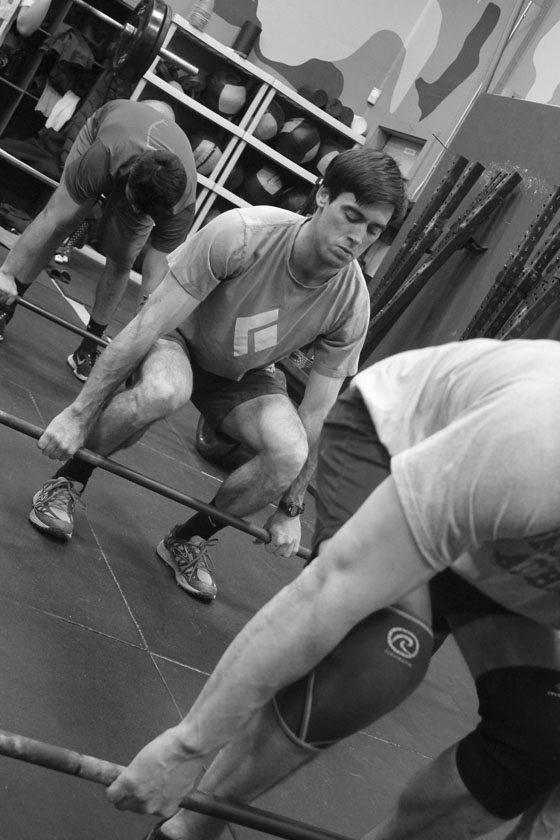
By Andy Tankersley
For the past two years I have trained 4-5 days a week ten months a year at Mountain Athlete. During this time I have worked full time as a school teacher, guided for Exum mountain guides and pursued my own rock climbing, ice climbing and skiing. On a recent personal trip to the Bugaboos I reflected on the direct connection between fitness and managing risk in the mountains.
The connection between safety and fitness is both quite obvious and subtle.
The obvious connection: As a climber being strong, having endurance and stamina directly impacts how hard you climb, how efficiently you move and how quickly you recover. Simply put you can pull a little harder, climb more pitches, hang on longer and ultimately have more fun doing it.
Perhaps less obvious is the connection between fitness/training and decision making. Simply put, how physical output influences choices and focus in the mountains. As I guide I am constantly evaluating my clients physical and mental reliability, and responding to what they present. For example, 8 hours into a day I see a client’s footwork begin to get sloppy and their focus decline. In response I might put them on a rope in terrain they are capable of traveling un-roped when reliable.
As mountain athletes we are all subject to deterioration at some point. My observation is that awareness often lags behind physical decline. Often we have lost focus and gotten sloppy before we notice it. Effective training I would argue expands that threshold, and done well prepares us to perform during the deterioration. Mountain Athlete sport specific training cycles utilize varied, full-body, coordinated exercises while fatigued. This I have noticed translates in maintaining coordination and strength deep into a long push, and mentally trains us to separate fatigue from focus.
On a recent personal climbing trip in the Bugaboo’s I began reflecting on the how fatigue influences decision making. When you are tired and deteriorating it seems common to start to make choices and fixate on ending the day as quickly as possible (get down, get to camp, get to the car, get the hell out, etc.).
In the Bugaboo’s we were often faced with route choices at the end of long climbing days. Usually choosing between faster routes with substantial objective hazards (deteriorating Col’s with major rockfall, short cuts under icefalls, etc.), or adding an hour or two of glacier travel and mitigating exposure. Arriving well trained and fit, route decisions were simple, objective, and judgment based. Watching haggard teams making decisions based only what was fastest, and exposing themselves to massive hazards made me thankful that walking an extra couple hours physically was no big deal.
As climbers we all develop our own judgment, risk tolerance, and goals. Being well trained provides a foundation to make decisions that are less physically influenced, and more aligned with how we want to move through the mountains.
You Might Also Like The Mountaineer: My 3 Most Dangerous Mountain Mistakes
